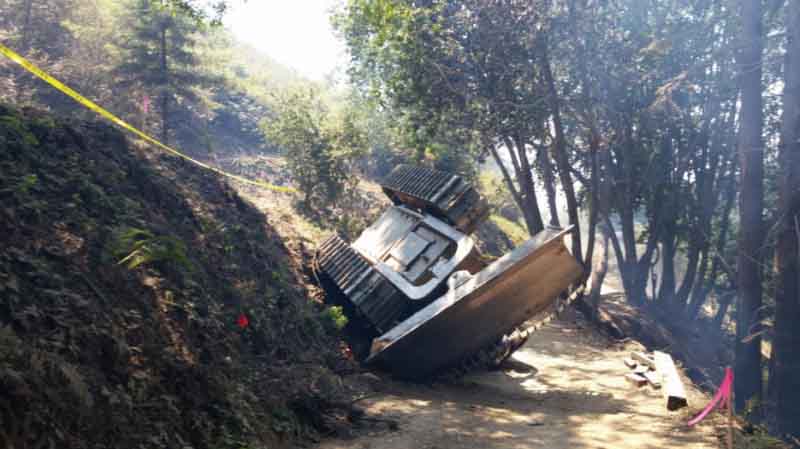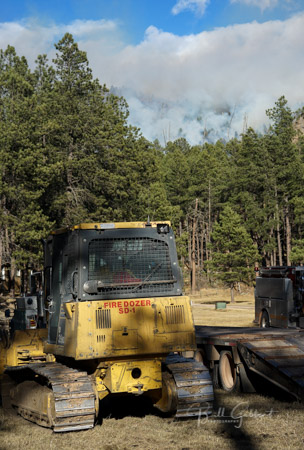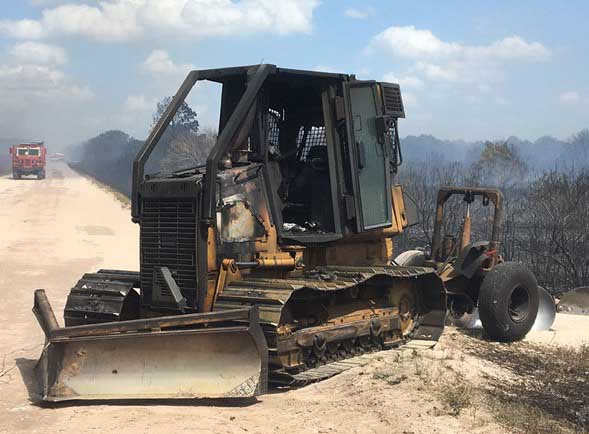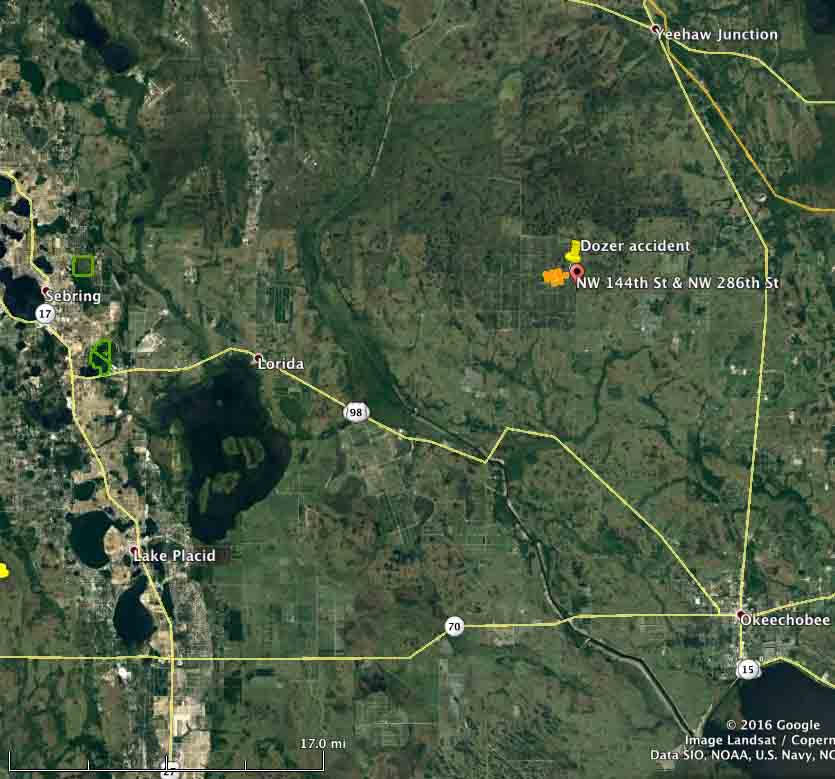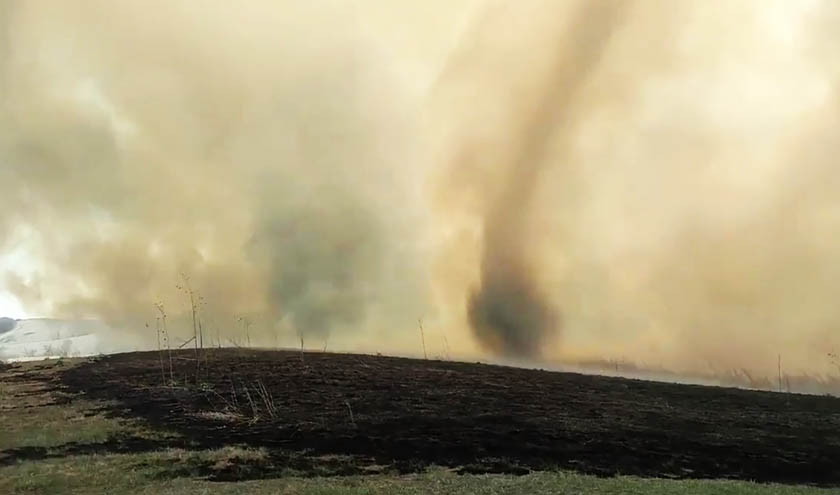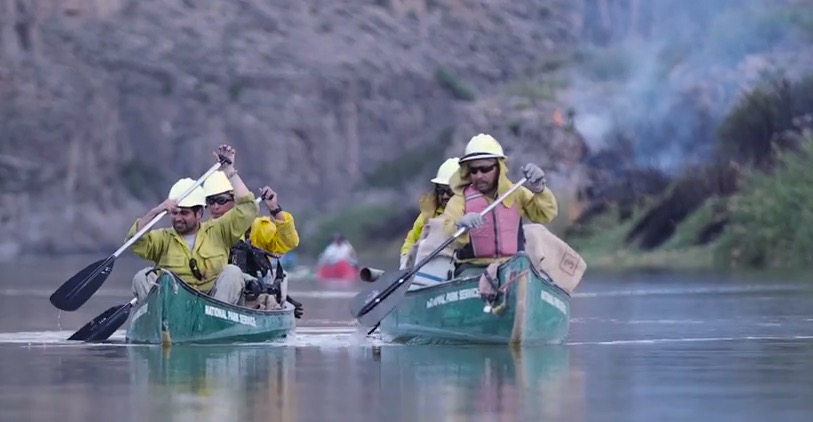About seven weeks after Shawna Legarza started her new job July 4, 2016 as the National Fire Director for the U.S. Forest Service, she experienced what so far has been her toughest challenge in that position. She was asked to speak at the memorial service for Justin Beebe, a member of the Missoula-based Lolo Hotshots who was killed by a falling tree August 13 as he was running a chainsaw on the Strawberry Fire in eastern Nevada. She searched for the right words to say in front of what turned out to be 750 to 1,000 people at the service.
“I thought, what will I say?”, she told us on Monday. “I didn’t know Justin Beebe, and I knew that their eyes would be on me because I was the new Fire Director”, she said.
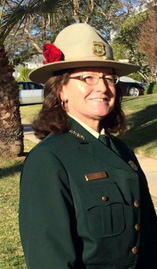
She spoke to the crowd in Ogren Park in Missoula from a podium set in front of the pitcher’s mound. The attendees included approximately 15 fire crews dressed in fire resistant pants and their own crew T-shirts.
“You know what I did Bill?” she said. “I wrote [and read from] a letter to his parents. I thought long and hard about the stuff I put in that letter to mom and dad. That probably has been the most difficult thing I have done. They don’t give you a task book for how to be the National Fire Director”.
I reminded her about an interview she did with CBS News June 30, 2014 when she was the Regional Fire Director for the USFS in California. The subject of the 19 fatalities on the Yarnell Hill Fire came up and she mentioned the concept of a Common Operating Picture “… of what the fire is doing and where our people are”. I asked if the federal wildland fire agencies will implement this technology in the near future.
“I still believe and I still want a Common Operating Picture and I also believe that we have a long ways to go on information technology”, she said. “I think the federal land management agencies are behind the curve on that. We work with the Department of the Interior. We have an [Interagency Fire Unmanned Aircraft Systems Subcommittee] that’s looking at the different policies, rules, and regulations using technology — drones — to help us in wildland firefighting. You know, it takes time to work through some of those things, but we’re working through them right now….. I live for the day when there is a drone carrying a jerry can [with fuel] up the hill to help the firefighters for a burnout or carrying supplies to fire camp.”
She said that would lessen the exposure of aviation personnel.
“I hope someday there are approved unmanned aerial aircraft that can fly the fire and instantly download a map to our Incident Management Team or agency administrator to see where the fire is at and where the resources are…. We could look at fires before we go in, to make sure it’s safe for us to go.”
I asked if there was an area that she felt strongly about, enough that she would give it special attention, and she said, “Absolutely! I’m trying to make some changes in the workplace environment, I feel very strongly about that. I want to see the agency have a work force that is completely inclusive of each other … and that people’s voices can be heard, understood, listened to and incorporated into all that we do, and that there is no discrimination of any kind. I am very passionate about that and I want to try to make a difference in the workplace environment for all wildland firefighters, for the Forest Service and other agencies.”
“I talk about,” she said, “having a workforce where everybody comes to work, they’re proud to be there, and included in whatever area they are working in, their voices are heard, they are listened to — free of discrimination, free of bias — it’s just a way of being. We’ve got some new initiatives that we are trying to roll out to the work force.
I asked her if there was one thing she would like a new Type 3 Incident Commander to know. She asked if she could name two, saying they need to know that “we have their back”, and “to ask for help.” She said, “I can remember when I got signed off as a Type 3 IC. Ask if you need help and guidance on a fire assignment. It’s OK. We don’t know all the answers. That’s why we’re a team.”
To answer the question, how many large or very large air tankers do we need, she said, “I would say we need anywhere from 18 to 28, you know that’s what it says in the [2012 Large Airtanker] Modernization Strategy. I think that’s a good range….I think the big thing to understand is that the Forest Service has become the overarching contract agreement holder of large air tankers and they are not all just for us. They are used by state and local governments all across the nation, so it’s hard to say how many just us, the Forest Service, needs because we work together with state, local, and tribal agencies to help them with wildland fire response across the nation. I think it’s hard to target just one number just for the Forest Service knowing that we’re all in it together in the cohesive strategy. I think we’re setting up with a good mix for this year and the coming years.”

She said the FS will have about 10,000 firefighters this year, which is the same as the last several years, and that the Trump administration’s federal hiring freeze did not have a huge effect on the hiring of firefighters for this summer. “We worked really swiftly… to get the exemptions through for firefighting, but we’re alright”.
When asked about her advanced degrees, she said, “Yeah, I’m an overeducated hotshot! I have a doctorate in psychology and organizational leadership. My masters is in kinesiology.”
Does that help you in your present job, I asked?
“Absolutely. I focused on transformational leadership. The four elements of transformational leadership I believe have helped me in my job, in this position I am in and my ability to influence others to help them in their decisions. I’m not a line officer, I’m a staff officer so I feel I need to influence inspirational motivation. I need to inspire and motivate the folks where I go and talk and be an inspiration to them for the agency…. individualized consideration. So everybody is different, right, so if you work for me, how I interact with Bill may be different from how I would with Mike, or Tom, or Bob, or whatever, so I find that really gratifying because I believe that leadership takes energy and to have that energy you have to be motivated and you have to treat everybody for who they are as a human being so that they feel they are more valued and inclusive into the team. That’s easy when you’re running a hotshot crew, you’re right there with morning briefing and evening briefing, you’re there with them, but when you come into a large organization it becomes more challenging for those different attributes of transformational leadership to be able to influence my small team and they can continue to influence their teams throughout the organization, and hoping that it makes a difference down the road for how people feel valued in the Forest Service.”
“I went to college my whole career”, she continued. “I’ll be paying for it until l turn 74 — working hard and taking out loans. I think it finally paid off. My parents would say, ‘Why are you still going to school? What are you studying now?’ … I continue to learn every day, I make mistakes just about every day. I learn from them and continue on the next day.”
About the next fire season, she said, “I’ve always prepared for every fire season like it’s going to be the worst. So you get ready and you prepare your team. You prepare like it’s the real deal. I saw that on hotshot crews and I see that now with the staff here, getting them ready…You have to be prepared, you can’t say, oh, it snowed and rained a lot in California so we’re not going to have a fire season, it could be just the opposite. All those fine fuels could dry out and we could have a very destructive fire season.”

